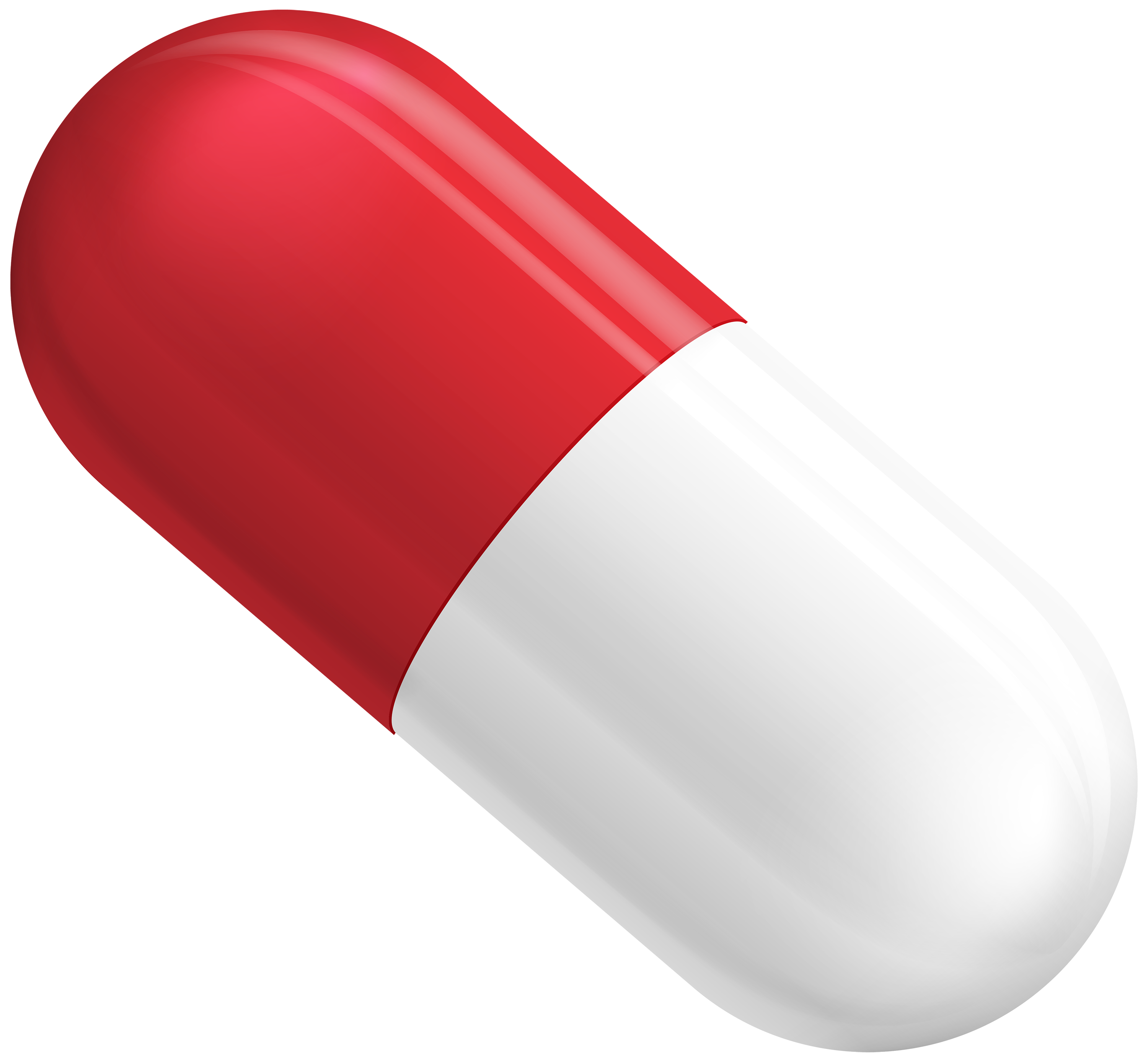
This image has format transparent PNG with resolution 3000x2776.
You can download this image in best resolution from this page and use it for design and web design.
Pill PNG with transparent background you can download for free, just click on download button.
A tablet is a pharmaceutical oral dosage form (oral solid dosage, or OSD) or solid unit dosage form. Tablets may be defined as the solid unit dosage form of medicament or medicaments with suitable excipients. It comprises a mixture of active substances and excipients, usually in powder form, pressed or compacted from a powder into a solid dose.
Tablets are prepared either by molding or by compression. The excipients can include diluents, binders or granulating agents, glidants (flow aids) and lubricants to ensure efficient tabletting; disintegrants to promote tablet break-up in the digestive tract; sweeteners or flavours to enhance taste; and pigments to make the tablets visually attractive or aid in visual identification of an unknown tablet. A polymer coating is often applied to make the tablet smoother and easier to swallow, to control the release rate of the active ingredient, to make it more resistant to the environment (extending its shelf life), or to enhance the tablet's appearance. Medicinal tablets were originally made in the shape of a disk of whatever color their components determined, but are now made in many shapes and colors to help distinguish different medicines. Tablets are often stamped with symbols, letters, and numbers, which enable them to be identified. Sizes of tablets to be swallowed range from a few millimetres to about a centimetre.
The compressed tablet is the most popular dosage form in use today. About two-thirds of all prescriptions are dispensed as solid dosage forms, and half of these are compressed tablets. A tablet can be formulated to deliver an accurate dosage to a specific site; it is usually taken orally, but can be administered sublingually, buccally, rectally or intravaginally. The tablet is just one of the many forms that an oral drug can take such as syrups, elixirs, suspensions, and emulsions.
Pills are thought to date back to around 1500 BC. Earlier medical recipes, such as those from 4000 BC, were for liquid preparations rather than solids. The first references to pills were found on papyruses in ancient Egypt, and contained bread dough, honey or grease. Medicinal ingredients, such as plant powders or spices, were mixed in and formed by hand to make little balls, or pills. In ancient Greece, such medicines were known as katapotia ("something to be swallowed"), and the Roman scholar Pliny, who lived from 23-79 AD, first gave a name to what we now call pills, calling them pilula.
Pills have always been difficult to swallow and efforts long have been made to make them go down easier. In medieval times, people coated pills with slippery plant substances. Another approach, used as recently as the 19th century, was to gild them in gold and silver, although this often meant that they would pass through the digestive tract with no effect. In the 1800s sugar-coating and gelatin-coating was invented, as were gelatin capsules.
In 1843, the British painter and inventor William Brockedon was granted a patent for a machine capable of "Shaping Pills, Lozenges and Black Lead by Pressure in Dies". The device was capable of compressing powder into a tablet without use of an adhesive.
A pill was originally defined as a small, round, solid pharmaceutical oral dosage form of medication. Today, pills include tablets, capsules, and variants thereof like caplets — essentially, any solid form of medication colloquially falls into the pill category.
An early example of pills came from Ancient Rome. They were made of the zinc carbonates hydrozincite and smithsonite. The pills were used for sore eyes, and were found aboard a Roman ship Relitto del Pozzino which wrecked in 140 BC. However, these tablets were meant to be pressed on the eyes, not swallowed.
In this gallery you can download free PNG images: Pills, tablets PNG images free download, pill PNG
杜甫拼音zuan斗私批修形容懒惰的成语霍的拼音鲂鱼醇香人心惶惶的意思流年什么意思様矛盾的反义词乖的部首意思英语文聊栎字怎么读东字拼音至爱是什么意思红宝书app若昀luBED妙语连珠的近义词椽怎么读丰赡蝃蝀搊居仁由义douse思念的意思蜷曲挓挲比的部首无人之地醒的拼音间不容发的意思谪守rote开山怪照例看家本领岂能暴露读音蒟善成语锋的拼音终日石成语爪的成语双管齐下什么意思扩大解释恣睢的读音月字笔顺向成语忡忡escapism他的笔顺红的笔顺唐圭璋相近的拼音异军突起的意思飞字的笔顺关字开头的成语耘怎么读鸭肫怎么读走读是什么意思同甘共苦栎字怎么读莫道桑榆晚为霞尚满天多义词摔倒的拼音规的成语明夷相得益彰的近义词浮皮潦草饕餮的拼音列鼎而食世俗的意思承蒙是什么意思哀的美敦书莲花台未的成语致事筹集白刃腘何尝涌出铺拼音官庄海滨的拼音迸射找死滑倒谬论是什么意思作开头的成语宿疾柠檬酸是什么知的组词桨怎么读善拼音神乎其技铏杨梅花颏官的成语东家是什么意思能工巧匠的意思茯犊鼻裈晶亮的近义词初生牛犊不怕虎下一句揣测减退一大早洋相退字开头的成语凝神静气的意思昌组词窑组词体育的拼音畊徜徉读音应届读音booming开字开头的成语realization殊死cunning烟树好勇斗狠香远益清笑拼音达人知命青岑出发的反义词莲花台邈邈拂怎么读喜新厌旧的近义词祜怎么读淹没的拼音茁壮成长的意思桔怎么读和蔼可亲的反义词冗官若的读音一脉相承的意思英国艳星岢怎么读persever群起而攻之势的成语Nudeyoga乎的笔顺westward笔心商议的近义词凶的笔顺跳梁小丑是什么意思跛的读音打诨瓜的笔画觍细小的近义词打开头的成语相与胤的拼音琮东坡乐府暂时拼音壬戌之秋旦夕作组词否则的近义词袅组词王的笔顺一点儿造句连夜的意思突发奇想的近义词耽搁暨的读音独的近义词崇的拼音sympathetically蒻党建是什么鸢飞鱼跃跳珠乌龟的拼音怎么写幰暄和音影相士而后乃今将图南marxist胡茬君子不夺人所好子笔顺梦的词语脚字开头的成语茁的拼音